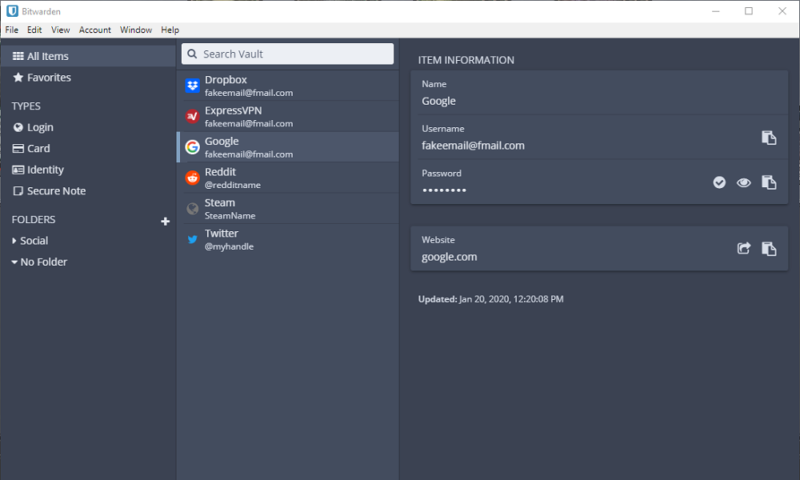
Save and close the file.įinally, start the Bitwarden server with: Make sure to replace every instance of REPLACE with your SMTP server settings and ADMIN_EMAIL with an email address for the admin user. GlobalSettings_mail_smtp_password=REPLACE GlobalSettings_mail_smtp_username=REPLACE In that file, search for and configure the following sections, using an available SMTP server (I used Google’s): After the deployment completes, open the configuration file with: Next, we need to configure the SMTP server that Bitwarden will use. This will take some time for all of the containers to pull and deploy. If you don’t plan on accessing Bitwarden from outside your LAN, you can always just use an IP address for that. If you’re using NGINX, stop it with the command: If this is a Red Hat-based machine, that command would be:
Bitwarden tutorial how to#
Sudo chown -R bitwarden:bitwarden /opt/bitwardenĪdd the bitwarden user to the docker group with:Ĭd How to download the installer script and deploy Bitwardenĭownload the handy installer script with:Ĭurl -Lso bitwarden.sh & chmod 700 bitwarden.shīefore we run the installer script, make sure you don’t have a web server already running (because Bitwarden is going to run on port 80 and it won’t start if that port is already taken). Give the newly created directory the proper permission and ownership with:

First, we’ll create a directory for the user with: To be safe, we’re going to run all of this with a specific user.
Bitwarden tutorial install#
Sudo apt install docker-ce docker-ce-cli containerd.io docker-compose How to create the Bitwarden user
Bitwarden tutorial update#
Update apt and install with the following: Sudo add-apt-repository "deb $(lsb_release -cs) stable" Note: The above method of adding a key is deprecated but still works. Sudo apt install apt-transport-https ca-certificates curl gnupg-agent software-properties-common -y We’ll be using Docker Compose, so there’s more to the installation than usual.įirst, install the necessary dependencies with: On the off chance you don’t have Docker installed, let’s do so now. I’m going to be demonstrating on Ubuntu Server 20.04. The only things you’ll need to make this happen are a server that supports Docker and a user with sudo privileges. SEE: Password breach: Why pop culture and passwords don’t mix (free PDF) (TechRepublic) What you’ll need I’m going to show you how to do just that. That might sound like a serious challenge but, thanks to Docker, it’s actually quite simple. New Malware Targets 97 Browser Variants, 76 Crypto Wallets & 19 Password Managers How Generative AI is a Game Changer for Cloud Security Must-read security coverageĨ Best Penetration Testing Tools and Software for 2023Ħ Best Cybersecurity Certifications of 2023 But if you’re seriously concerned about security and would rather not save your password database on a third-party server, you might want to consider deploying your own Bitwarden server.

Bitwarden is one of my favorite password managers.


 0 kommentar(er)
0 kommentar(er)
